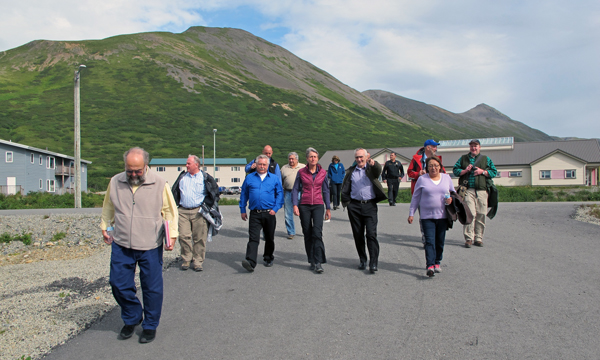
The fate of toddies, sours and mules at Alaska distilleries is still uncertain. The state’s Alcoholic Beverage Control Board is struggling to decide whether the businesses should be allowed to serve cocktails. At a meeting Monday, the board revisited an advisory instructing distillers to stop mixing drinks. But, they didn’t come to any new conclusions.
“We’ve been doing this from the start,” Rob Borland told the board. “We’ve been making fine liquors. We’ve been squeezing our own juice for our cocktails, we’ve been doing all of that kind of stuff from the beginning.”
Borland is the owner of Ursa Major Distilling in Fairbanks. He’s one of several distillers who called into Monday’s meeting to oppose banning mixed drinks.
Last month, the ABC Board upheld an advisory prohibiting the sale of cocktails made with products not produced on-site.
Since then, some distilleries have continued to serve cocktails made with mixers they produce themselves. Things like syrups, tonic water, ginger beer and liqueurs. The state hasn’t issued any violations for this.
But in a memo ABC Board Director Erika McConnell said the cocktails distilleries are serving are not what she envisioned as ‘the distillery’s product’ when she sent out the advisory. So, she went back to the board for more guidance.
Jared Curé owns the Narrows Bar in Juneau. He told the board anything considered distillery products should be bottled and sold like their liquor.
“It’s just a slippery slope,” Curé said. “A lot of these people that are chiming in, I don’t think they’re bad actors but if we allow this kind of model to go on in certain ways without putting clear controls on it, people can push the limits even further.”
The board was split on what to do.
Ellen Ganley said they shouldn’t ban distillers from using non-alcoholic beverages.
“I think we have to be really careful here because we do have nine businesses that are in at least some respect having the rug pulled out from underneath them,” Ganley said.
Thomas Manning disagreed. He said for something to be considered a distillery product, it needs to be part of the manufacturing process.
“I think that someone standing behind a bar and pouring orange juice into the vodka is not manufacturing onsite,” Manning said. “That’s mixing a drink.”
Bob Klein recused himself from the discussion as the board’s chair. But, speaking as the CEO of Anchorage Distillery, he said regulating non-alcoholic products is a slippery slope.
“It’s just very, very dangerous ground we’re treading on,” Klein said.
Rex Leath asked whether the board is even allowed to have a say about products that don’t contain alcohol.
“I’m not comfortable trying to regulate anything that’s non-alcoholic,” Leath said. “I don’t feel like I have the authority to do that.”
While that is true, Assistant Attorney General Harriet Milks said once the drink is mixed, it’s a different story. Milks is counsel to the board.
“If you have a glass of orange juice in one hand and a glass of vodka in the other hand, the board cannot regulate the hand with the orange juice,” Milks said. “But if you pour them together, then the board can regulate that.”
After several failed motions, the board couldn’t come to an agreement. Instead, they’ll revisit the advisory at a November meeting. At that point, new draft regulations for distilleries should be available from Alcohol and Marijuana Control Office staff. Until the issue is clarified, the agency will not issue violations to distilleries selling drinks using products they make on-site.






























